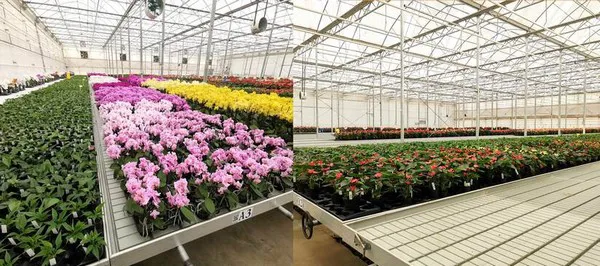China can provide important opportunities for Dutch greenhouse technology and knowhow. Therefore, it is important that stakeholders in that field are aware of what is going on in the country. To facilitate that knowledge, the LAN team in Beijing and Shanghai has recently organized a roundtable, during which Chinese experts shed light on the development of agricultural policies and practices on a national and regional level (Yangtze delta region and Shanghai). In a series of three articles, the outcome of this roundtable will be discussed. This third article will deal in more detail with the specific opportunities for the protected agricultural sector in the Netherlands.
Energy costs are one of the main challenges in profitable high-tech greenhouse growing. Especially in situations where the location of a greenhouse is not optimal as far as climate is concerned. New energy supply technologies could be part of the answer to this, such as geothermal, hydrogen, and cogeneration. This situation offers opportunities for integrated Dutch solutions.

Other outcomes of the roundtable
There is a need for a professional training base for extension technicians and managers of large-scale high-tech greenhouses. The Chinese Ministry of Agriculture and Rural Affairs recognizes this issue and has launched policies to support professional training for extension technicians, managers, and owners of large-scale farms in recent years. Dutch companies and educational organizations can contribute to establishing these training bases.
Fresh logistics are still not fully developed. Especially the first mile, the cold chain facilities directly after harvesting, require more investments and technology. The government has established financial programs to improve the situation. The new government policy to develop covered horticulture in inarable areas such as desert areas (like the Gobi Desert) will entail logistical challenges because the fresh products must be transported to urban centers. This offers opportunities for Dutch technology suppliers and logistic knowhow.
To further increase the productivity in existing solar greenhouses, there is a need for cost-effective climate and crop management facilities. Dutch greenhouse technologies can play an important part in this, such as climate control, use of the substrate, cropping systems, CO2 application, and biological pest control.
The current ecosystem of the protected agricultural industry in China is still under development. To stimulate the ecosystem, it needs joint efforts from both the Netherlands and China at an industrial and governmental level. Experts suggest that part of the supply chain currently located in the Netherlands can be localized by cooperating and collaborating with Chinese companies.
The Chinese market for fresh produce is competitive and challenging the need for varieties that fit the Chinese customer’s taste increases. That situation calls for joint efforts from the Dutch seed industry 1) to breed varieties for Chinese customers and 2) to provide high-quality young plants and propagation materials in a stable amount.
Another challenge for retailers and wholesalers is the loss of fresh produce along the supply chain. Nowadays, the need for postharvest technology is increasing. Existing postharvest technology also requires high investments. From the retailers’ and wholesalers’ point of view, it requires a contribution from all stakeholders.
For growers, the biggest challenges are the costs of operating a high-tech greenhouse. These costs are high because of 1) energy consumption, 2) seeds, and 3) labor training. The energy sources in most existing high-tech greenhouse are gas and electricity.
Compared to the Netherlands, most parts of China have more extreme climate conditions. As a result, ensuring a stable supply of produce throughout the year can lead to lower profits because more energy is needed. Therefore, growers not only call for different types of facilities for production but also seek new alternative energy sources.
Another challenge for growers is pest control. There is also an urgent shortage of 1) crop varieties that are resistant to diseases and insect pests and 2) biological pest control methods.
The shortage of skilled labor is indirectly caused by the imbalanced allocation of resources to the vocational educational institutions in the current higher education system in China. Therefore, growers often need to invest in labor training. This can be seen as an opportunity for education organizations in the Netherlands that can provide vocational training programs.
The above-mentioned challenges have been recognized by stakeholders in the protected agricultural industry in China. This is well reflected in the development plan of Hengsha Island in Shanghai that was drafted by joint efforts from the government, research institutes, and industry., Shanghai is aware of the challenges and making efforts to achieve a win-win situation for consumers and investors, balancing people’s basic needs for fresh produce and investors’ needs for profit.
Source: agroberichtenbuitenland.nl
